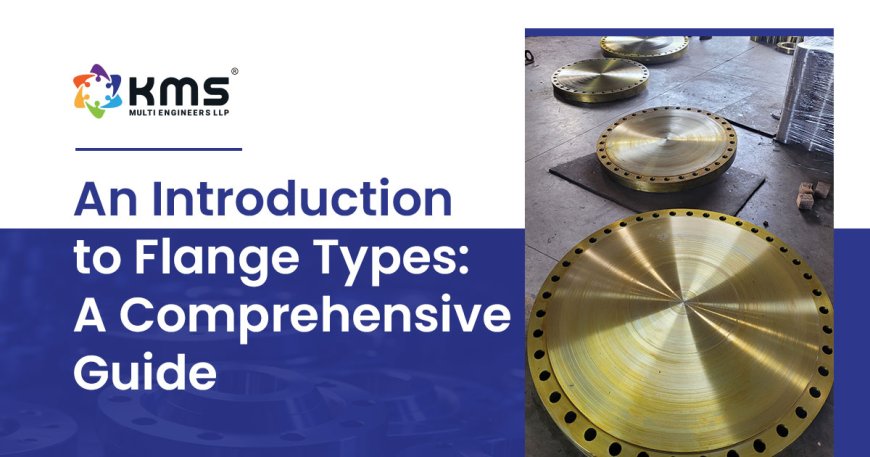Flange Types: Advantages and Uses
Explore various flange types—slip-on, weld neck, blind, and more. Learn their advantages and uses to select the right one for your piping needs.

Flanges are essential components in the construction and maintenance of piping systems. They facilitate connections between pipes, valves, and other equipment, ensuring a secure and leak-proof seal. Understanding the advantages and specific uses of each flange type can help you make the best choice for your application. This blog post will explore various flange types, highlighting their benefits and typical uses.
1. Slip-On Flanges
Advantages:
- Cost-Effective: Slip-on flanges are generally less expensive than other types due to their simpler design.
- Ease of Installation: They are easy to align and weld, making installation straightforward and less time-consuming.
- Versatile: Suitable for a range of applications due to their wide availability in different sizes and materials.
Uses:
- Commonly used in low to medium-pressure systems.
- Ideal for applications where ease of installation and cost are primary considerations.
- Often found in water, oil, and gas pipelines, as well as in structural applications.
2. Weld Neck Flanges
Advantages:
- Strong and Reliable: The tapered neck design helps distribute stress evenly, making these flanges suitable for high-pressure applications.
- Durable: They offer excellent mechanical strength and resistance to high temperatures and pressures.
- Better Flow Characteristics: The gradual transition helps minimize turbulence and pressure drop.
Uses:
- Used in high-pressure and high-temperature environments, such as in chemical processing and oil refineries.
- Commonly employed in critical applications where a robust and leak-proof connection is essential.
3. Blind Flanges
Advantages:
- Sealing: Provides a secure seal for the end of a pipe or vessel, preventing leakage.
- Ease of Maintenance: Allows for easy isolation of sections of a piping system for maintenance or inspection.
- Cost-Efficient: Generally less expensive compared to flanges with openings.
Uses:
- Used to close off the end of a pipe, vessel, or flange.
- Suitable for temporary or permanent shutdowns, testing, and maintenance purposes.
4. Socket Weld Flanges
Advantages:
- Strong Connection: Offers a strong and reliable joint with the pipe, suitable for high-pressure and high-temperature applications.
- Smooth Internal Surface: Reduces turbulence and resistance to flow, making it ideal for applications with high fluid velocities.
- Minimized Leakage: The socket weld design reduces the risk of leakage.
Uses:
- Commonly used in small to medium-sized pipes in high-pressure systems.
- Ideal for applications in the oil and gas, chemical, and power generation industries.
5. Threaded Flanges
Advantages:
- No Welding Required: Can be easily screwed onto the pipe, which is useful where welding is not feasible.
- Reusability: Threaded flanges can be disassembled and reused, making them ideal for applications requiring frequent maintenance.
- Cost-Effective: Generally less expensive than welded flanges.
Uses:
- Suitable for smaller pipe sizes and applications where welding is impractical.
- Commonly used in low-pressure systems, and for piping systems where ease of disassembly is important.
6. Lap Joint Flanges
Advantages:
- Flexibility: Allows for easy alignment and adjustment, which is beneficial when dealing with misaligned pipes.
- Ease of Disassembly: Provides a simple method for frequent disassembly and reassembly.
- Reduced Flange Corrosion: The lap joint design reduces the likelihood of corrosion at the flange faces.
Uses:
- Used in systems where frequent maintenance and adjustments are required.
- Commonly found in applications with large-diameter pipes and in systems that need to be dismantled periodically.
7. Orifice Flanges
Advantages:
- Flow Measurement: Designed specifically for accommodating orifice plates used to measure flow rates.
- Accurate Measurement: Provides accurate and reliable flow measurement with minimal interference.
- Built-In Design: Simplifies the integration of flow measurement devices into the piping system.
Uses:
- Primarily used in flow measurement applications in various industries, including oil and gas, water treatment, and chemical processing.
- Ideal for systems where precise flow measurement is crucial for operational efficiency.
8. Raised Face Flanges
Advantages:
- Enhanced Sealing: The raised face design helps create a more effective seal by concentrating the gasket load on a smaller area.
- Improved Pressure Retention: Provides better resistance to high pressure and temperature conditions.
- Versatile: Suitable for a wide range of applications due to its effective sealing properties.
Uses:
- Commonly used in high-pressure and high-temperature systems.
- Found in various industrial applications, including petrochemical, power generation, and water treatment systems.
Conclusion
Selecting the right type of flange is crucial for ensuring the reliability and efficiency of your piping system. By understanding the advantages and uses of different flange types, you can make informed decisions that best meet your operational needs. Whether you require a high-pressure connection, a cost-effective solution, or specialized flow measurement, there is a flange type designed to meet your requirements.
What's Your Reaction?














![Noots Focus Reviews [Truth Exposed 2025]!](https://news.bangboxonline.com/uploads/images/202501/image_430x256_678e3b94881a1.jpg)
![Vivalis Male Enhancement: The Must-Know Ingredients [2025 Update]](https://news.bangboxonline.com/uploads/images/202501/image_430x256_678e3b54e396c.jpg)








